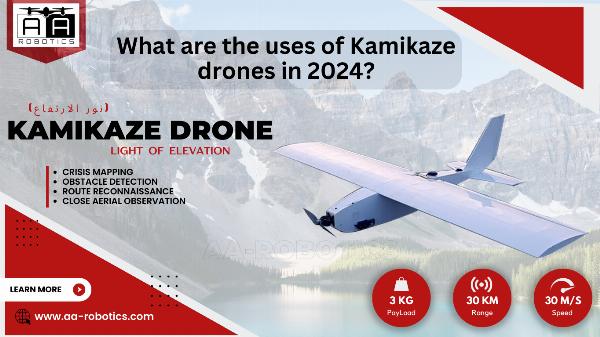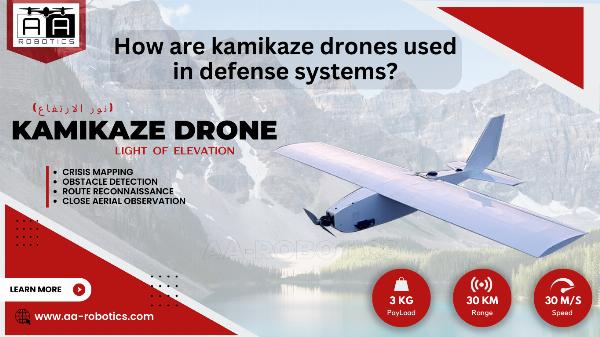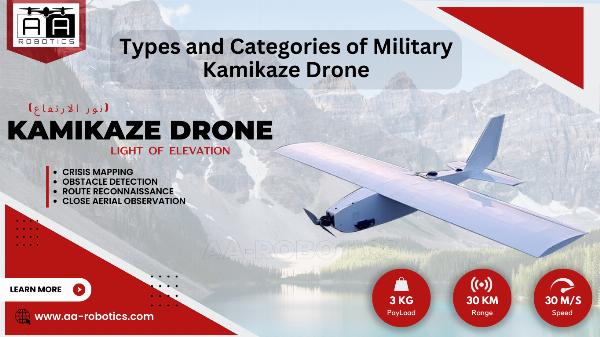 Local SEO Boost – Put Your Business on the Local Map!
Local SEO Boost – Put Your Business on the Local Map!
How Are Kamikaze Drones Designed and Operated?
Written by DSO Medplus » Updated on: June 17th, 2025

Introduction
Kamikaze drones, also known as loitering munitions, represent a cutting-edge development in modern warfare. These drones are designed to loiter in the air for extended periods before diving into a target, effectively acting as guided missiles. This combination of surveillance capabilities and precision strike functions makes kamikaze fixed-wing drones a formidable tool on the battlefield. This article delves into the intricate design and operation of kamikaze drone, shedding light on their technological features, operational mechanisms, and strategic advantages.
Design Elements of Kamikaze Drone
1. Aerodynamic Structure
The design of kamikaze drone begins with their aerodynamic structure, which ensures stability, maneuverability, and endurance. Typically, these drones feature lightweight, composite materials that offer high strength-to-weight ratios. The airframe is designed to minimize drag and maximize flight efficiency, allowing the drone to loiter for extended periods.
2. Propulsion Systems
These drones are equipped with propulsion systems that vary based on their size and mission requirements. Smaller drones often use electric motors powered by lithium polymer (Li-Po) batteries, offering silent operation and reduced thermal signatures. Larger models might use internal combustion engines or hybrid systems to achieve greater range and loitering time.
3. Navigation and Control Systems
Advanced navigation and control systems are critical to the effective operation of kamikaze drone. These systems typically include:
Global Positioning System (GPS): For accurate geolocation and waypoint navigation.
Inertial Measurement Units (IMUs): To provide precise orientation and movement data.
Autopilot Software: Enabling autonomous flight modes, including takeoff, loiter, and dive.
Communication Systems: For real-time data link with ground control stations, ensuring reliable command and control.
4. Sensor Suites
Unmanned Aerial Vehicle drones are equipped with sophisticated sensor suites that enhance their reconnaissance and targeting capabilities. These sensors may include:
Electro-Optical/Infrared (EO/IR) Cameras: Providing day and night imaging capabilities.
Synthetic Aperture Radar (SAR): For all-weather reconnaissance and target identification.
Laser Rangefinders and Designators: For precise targeting and terminal guidance.
5. Warhead Integration
The defining feature of a kamikaze fixed-wing drone is its warhead, designed for effective target neutralization. The warhead's size and type are tailored to the mission, ranging from small explosive charges for light targets to larger warheads capable of penetrating armored vehicles. The integration of the warhead with the drone’s flight control system ensures precise detonation upon impact.
Operational Mechanisms of Kamikaze Drone
1. Mission Planning
The operation of kamikaze drones begins with meticulous mission planning. This involves defining the target area, selecting appropriate loitering points, and establishing attack parameters. Mission planning software assists operators in creating flight paths and setting engagement criteria, ensuring the drone can effectively loiter and strike.
2. Launch and Deployment
Kamikaze UAV drones can be launched using various methods, depending on their size and operational requirements:
Hand Launch: Small, portable drones can be hand-launched by operators.
Catapult Launch: Medium-sized drones may use portable catapults or launch rails.
Vehicle or Aircraft Launch: Larger drones can be deployed from ground vehicles, ships, or aircraft, providing greater operational flexibility.
3. Loitering Phase
Once launched, the drone enters its loitering phase, during which it patrols a designated area while maintaining a high level of situational awareness. The drone’s sensors continuously scan the environment, relaying real-time imagery and data back to the ground control station. Operators can adjust the loitering pattern and altitude based on emerging intelligence and battlefield dynamics.
4. Target Identification and Engagement
When a target is identified, the drone transitions from loitering to engagement mode. This process involves several critical steps:
Target Confirmation: Operators or onboard algorithms confirm the target’s identity and location.
Attack Vector Calculation: The drone’s flight control system calculates the optimal approach vector for the attack.
Dive and Impact: The drone initiates a high-speed dive towards the target, using its guidance systems to ensure precision impact. The warhead detonates upon contact, neutralizing the target.
5. Post-Engagement Analysis
After the strike, operators conduct a post-engagement analysis to assess the mission’s success. This involves reviewing sensor data and imagery to confirm target destruction and gather intelligence on the surrounding area. The analysis helps refine future mission planning and improve operational tactics.
Strategic Advantages of Kamikaze Drone
1. Precision and Accuracy
Kamikaze drone offer unparalleled precision and accuracy, capable of hitting high-value targets with minimal collateral damage. Their ability to loiter and gather intelligence before striking ensures that only confirmed targets are engaged, reducing the risk of unintended casualties.
2. Cost-Effectiveness
Compared to traditional missiles and manned aircraft, kamikaze drones are relatively cost-effective. Their simpler design and lower production costs make them an attractive option for military forces seeking to maximize their strike capabilities without incurring prohibitive expenses.
3. Versatility and Flexibility
The versatility and flexibility of kamikaze fixed-wing drones make them suitable for a wide range of missions. They can be deployed in various environments, from urban areas to remote battlefields, and can adapt to evolving operational needs. Their ability to loiter and wait for optimal strike conditions adds a strategic dimension to their deployment.
4. Reduced Risk to Personnel
Kamikaze drone reduce the risk to military personnel by eliminating the need for manned aircraft in high-risk missions. Operators can control these drones from safe locations, minimizing exposure to enemy fire and other battlefield hazards.
5. Psychological Impact
The presence of these drones on the battlefield can have a significant psychological impact on adversaries. The constant threat of precision strikes creates a sense of uncertainty and vulnerability, potentially demoralizing enemy forces and disrupting their operations.
Ethical and Legal Considerations
While kamikaze drone offer significant tactical advantages, their use raises important ethical and legal considerations. The potential for misuse, civilian casualties, and violations of international law necessitates stringent regulations and oversight. Ensuring that these drones are used in compliance with established legal frameworks and ethical standards is crucial to maintaining their legitimacy and minimizing harm.
Conclusion
Kamikaze drones represent a transformative advancement in military technology, combining the capabilities of surveillance, loitering, and precision strikes into a single, versatile platform. Their design and operation involve a complex interplay of aerodynamic engineering, advanced sensors, and sophisticated control systems. As military forces continue to explore the potential of these drones, it is essential to address the ethical and legal challenges they pose, ensuring that their deployment enhances security while upholding humanitarian principles. The future of warfare will undoubtedly see an increased reliance on such innovative technologies, reshaping the battlefield and redefining the rules of engagement.
Note: IndiBlogHub features both user-submitted and editorial content. We do not verify third-party contributions. Read our Disclaimer and Privacy Policyfor details.
Copyright © 2019-2025 IndiBlogHub.com. All rights reserved. Hosted on DigitalOcean for fast, reliable performance.











